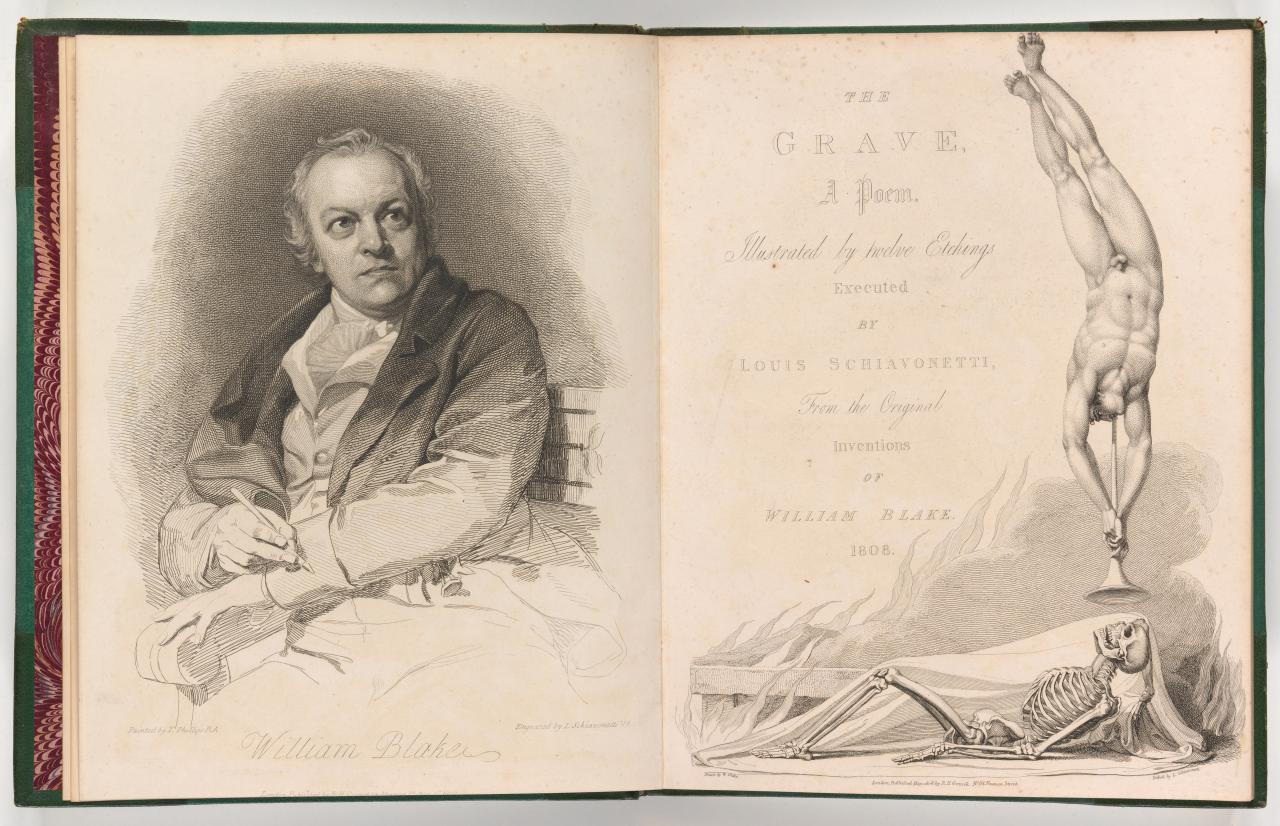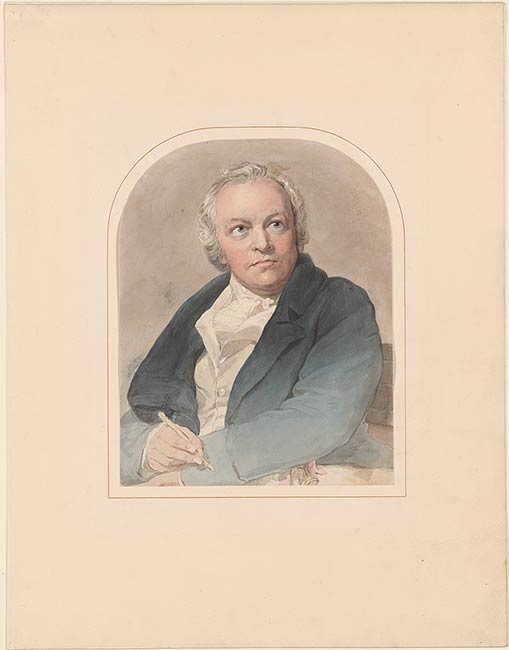 |
| National Portrait Gallery
Oil Portrait by Thomas Phillips
1807 |
The only formal portrait of William Blake was painted by Thomas
Phillips in 1807. It is uncertain if the work was as a result of
friendship between Phillips and Blake or in conjunction with Cromek's
proposed publication of Blair's The Grave with illustrations by
Blake. As it turned out Blake did not engrave the illustrations he had
painted for Cromek's publication but his portrait was included
prominently as the frontispiece.
The
Phillips portrait resides in the National Portrait Gallery in London. Cromek
had the engraving of Blake's portrait done by Luis Schiavonetti whom he
also hired to engrave Blake's images.
 |
| British Museum
Luis Schiavonetti Engraving |
 |
| Published book The Grave
National Gallery of Victoria |
 |
Morgan Library and Museum
Watercolor Copy from Butts Collection
Blake Portrait by Phillips
|
Milton, Plate 21 [23], (E 115)
"But I knew not that it was Milton, for man cannot know
What passes in his members till periods of Space & Time
Reveal the secrets of Eternity: for more extensive
Than any other earthly things, are Mans earthly lineaments."
Milton, Plate 32 [35], (E 132)
"And thou O Milton art a State about to be Created
Called Eternal Annihilation that none but the Living shall
Dare to enter: & they shall enter triumphant over Death
And Hell & the Grave! States that are not, but ah! Seem to be.
Judge then of thy Own Self: thy Eternal Lineaments explore
What is Eternal & what Changeable? & what Annihilable!"
Jerusalem, Plate 38 [43], (E 185)
"Divine-
Humanity, who is the Only General and Universal Form
To which all Lineaments tend & seek with love & sympathy
All broad & general principles belong to benevolence
Who protects minute particulars, every one in their own identity."
Descriptive Catalogue, (E 530)
"CLEARNESS and precision have been the chief objects in painting
these Pictures. Clear colours unmudded by oil, and firm and
determinate lineaments unbroken by shadows, which ought to
display and not to hide form, as is the practice of the latter
Schools of Italy and Flanders."
Descriptive Catalogue,(E 541)
"He who does
not imagine in stronger and better lineaments, and in stronger
and better light than his perishing mortal eye can see does not
imagine at all. The painter of this work asserts that all his
imaginations appear to him infinitely more perfect and more
minutely organized than any thing seen by his
mortal eye."
Vision of Last Judgment, (E 560)
"I intreat then that the Spectator will attend to the
Hands & Feet to the Lineaments of the Countenances they are all
descriptive of Character & not a line is drawn without intention
& that most discriminate & particular as Poetry admits not a
Letter that is Insignificant so Painting admits not a Grain of
Sand or a Blade of Grass Insignificant much less an
Insignificant Blur or Mark"
.




No comments:
Post a Comment